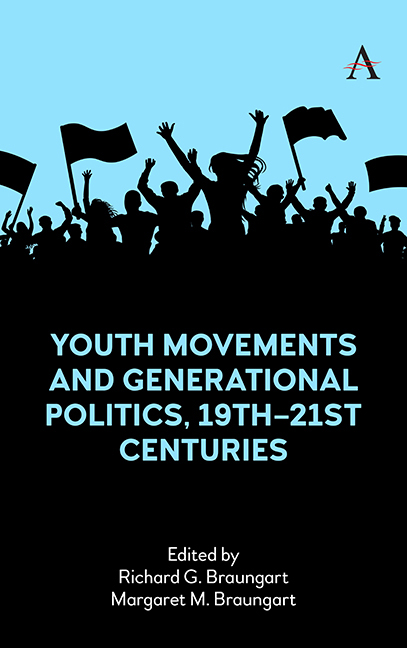10 - Historical Generations and Generation Units: A Global Pattern of Youth Movements
Published online by Cambridge University Press: 18 November 2023
Summary
This study explores the little understood relationship between historical generations and generation units. The attempt is made to construct a theory of historical generations and generation units that has broad enough analytic ability to explain the rise of youth movement activity throughout the world. In applying the theoretical assumptions over the last 170 years, this study identifies four historical generations (the Young Europe, Post-Victorian, Great Depression, and 1960s Historical Generations), representing 41 generational movements and 82 sets of generational units. The study also distinguishes between spontaneous and sponsored generational units on the political left and right, and traces the global growth and spread of generational movements over world time. The findings suggest a surprisingly good fit between theory and data.
INTRODUCTION
Problems with youth are as old as history, but youth movements, as we know them today, are less than two centuries old. Youth movements are types of collective behavior in which age-conscious groups or generation units mobilize to bring about or resist change. Generational units develop from the unique interaction between generational and historical forces that produces extraordinarily volatile periods in world time. These dynamic periods, called historical generations, are temporary combinations of historical and generational forces so closely intertwined that they operate as a single causal force for change—a unique blend of circumstances and social forces which may never be repeated in exactly the same way (Braungart, 1984a, 1984b).
During certain periods in world time (defined as the temporal order or unfolding of major local, national, and global events, and patterns of institutional structure and change), self-conscious, mobilized groups of young people act on behalf of their historically conditioned beliefs and attempt to expand new social, political, and cultural opportunities. Unlike recurring age cohorts who come of age on a continuous basis and act in relative harmony with prevailing historical forces, historical generations, represented by generational movements and generation units, reject existing social and political forms and erupt in a flurry of political and cultural activity. Historical generations represent periods of “moral upsurge” (Mills) or “creedal passion” (Huntington) in world time, eras when cultural ideals clash with social reality. The conflict and tension created by newly formed or perceived ideals and the existing social and political conditions lie at the root of generational movements.
- Type
- Chapter
- Information
- Youth Movements and Generational Politics, 19th-21st Centuries , pp. 235 - 260Publisher: Anthem PressPrint publication year: 2023

